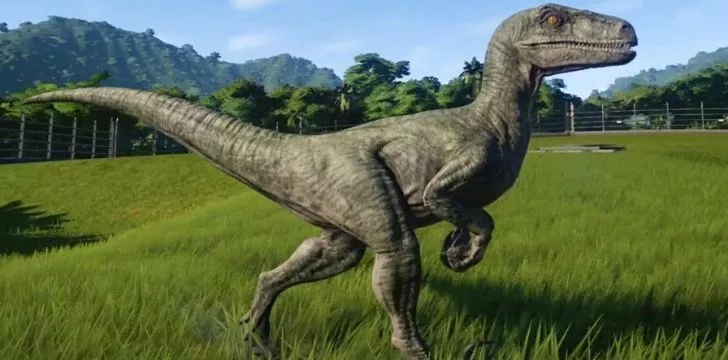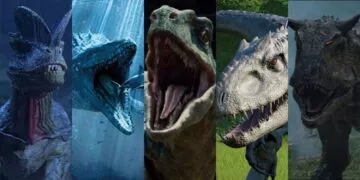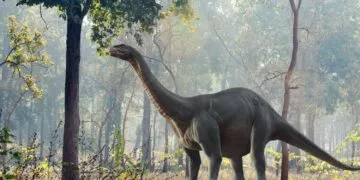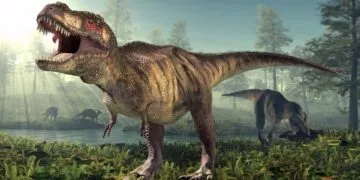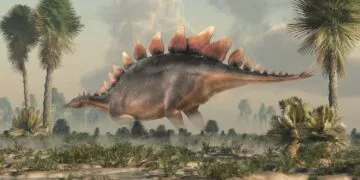If you ask your average 5-year-old what their favorite dinosaur is, they will generally make a big fuss about how cool Velociraptors are.
Hell, thanks to the Jurassic Park films they’re probably even your average 10-year-olds favorite dinosaur too! All I know is that they’re my favorite dinosaur.
If you’re coming here now trying to figure out what a Velociraptor is, and why they’re awesome, then here’s the general scoop.
Velociraptors were small to medium-sized dinosaurs that lived between 75 to 71 million years ago, give or take.
Adult Velociraptors grew to around 6.8 feet (2.07 m) long and 1.6 feet (0.5 m) high and weighed very little, around 33 pounds (15kg).
They had 26 razor-sharp serrated teeth, stood on two feet, with two small arms with three claws on each.
Most importantly though, they were most likely very fast, and were able to outrun most prey or even predators!
Now that you have a very basic idea of what a Velociraptor is, let’s look at some of the more interesting facts that make these dinosaurs the coolest of all!
What you’ve seen in the Jurassic Park movies is all a lie.
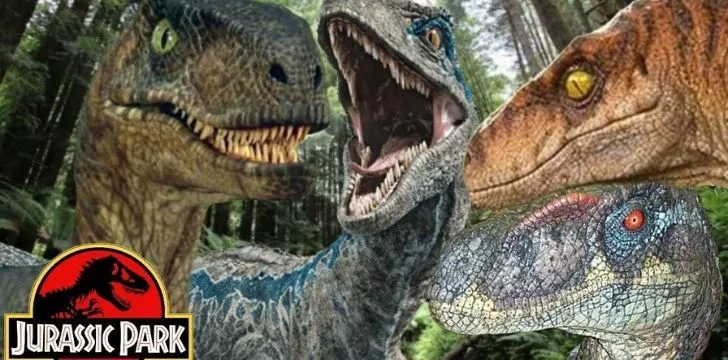
With facts like this, it’s best to rip the band-aid off first and get it over with. Those super agile, hyper-intelligent beasts that Chris Pratt controls in Jurassic World?
Yeah, they’re not actually based off Velociraptors. They’re actually a model of a different dinosaur called Deinonychus antirrhopus, which lived about 30 million years before the Velociraptor.
So why use an older dinosaur than Velociraptors and refer to them incorrectly?
Well, the Deinonychus is a much bigger and scary-looking version of the Velociraptor, not to mention their name is, well, simply not as cool.
Velociraptors were only discovered in 1924.
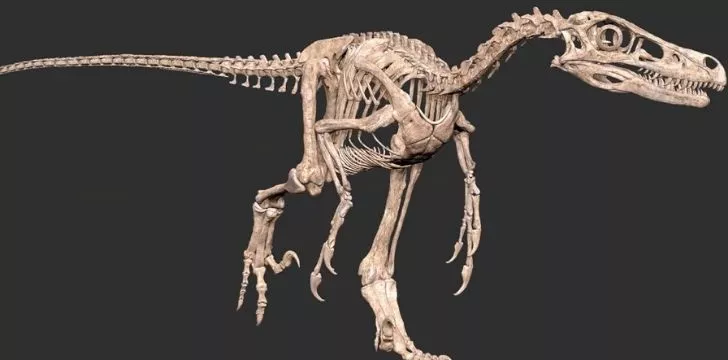
The fossils that were later identified as a new species were discovered in the Mongolian Gobi Desert on August 11, 1923, by Peter Kaisen.
The fossils Peter discovered were a crushed skull and a claw and were completely unknown to the world until that point in time.
The man responsible for naming the first Velociraptor fossil was actually the president of the American Museum of Natural History, a paleontologist called Henry Fairfield Osborn.
Velociraptors have a surprisingly accurate name.
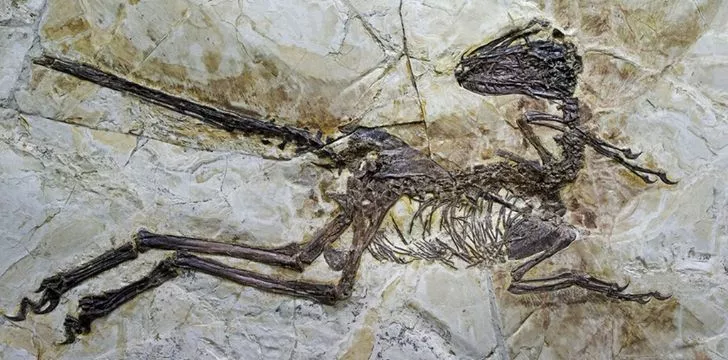
When Henry Osborn first named Velociraptors in 1924, he only had a small amount of information regarding the animals to go off.
From what he could see though, they would have been quite fast and agile hunters.
As such, he named them Velociraptors, a combination of the Latin word “velox” meaning “swift”, and “raptor”, which meant thief.
There is a fossil of a Velociraptor and Protoceratops caught in the middle of a fight.
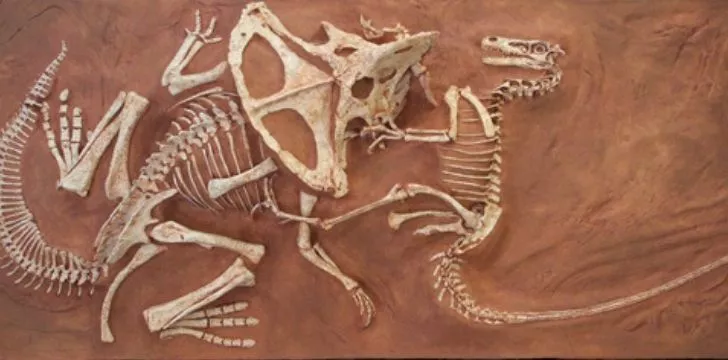
It’s actually one of the most striking fossils of any dinosaur (or two) that has ever been discovered.
The fossils found by a Polish and Mongolian team in 1971 clearly show that the two dinosaurs were in the middle of a life-or-death struggle when they were caught in what can only be guessed as a freak sandstorm and buried alive.
Their fossil remains still showed that it was a pretty even match – although one of the velociraptors arms was trapped in the jaws of the Protoceratops, the velociraptor had dug its claw deep in its opponents’ neck.
Surprisingly, Velociraptors were actually feathered dinosaurs.
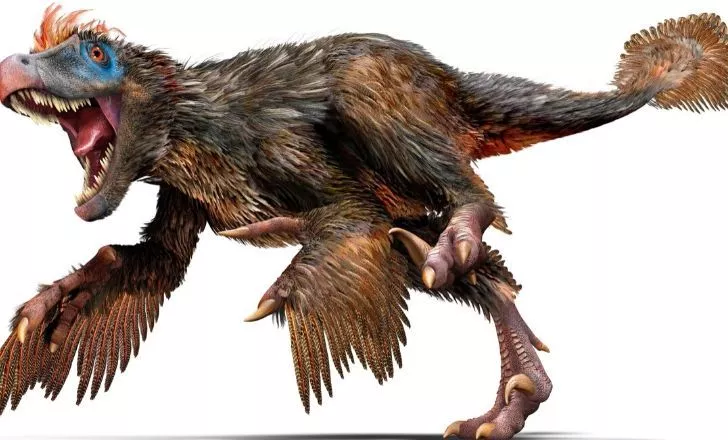
Once again, if you’ve based what you know of velociraptors off Jurassic Park, then I’m sorry for ruining your dreams.
The reality is that not only were Velociraptors not the giant and fearsome beasts that they were made out to be, but they were also covered in feathers!
With that being said, scientists still haven’t been able to figure out the extent of their plumage, whether they were completely covered in feathers or just had a few plumes sticking out here and there.
Either way, they certainly weren’t the lizard-like beasts as depicted in Jurassic Park!
Don’t worry though – Velociraptors couldn’t fly!
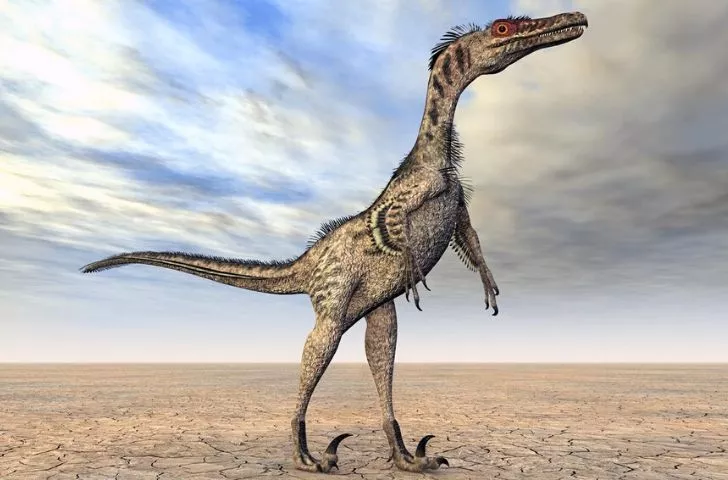
Although Velociraptors had feathers, they didn’t really have wings.
Maybe if they had kept on evolving for several millennia this would have become possible, but due to their physical make up they simply couldn’t, no matter how hard they tried!
They did have fused wishbones like modern birds, but their arms were simply too short to ever be able to support their body weight.
Once again due to the size and shape of their arms, they weren’t even able to glide!
So, what were their feathers for then? Some scientists have guessed that they may have been used in mating rituals, or to help shelter their eggs while brooding on a nest-like modern-day chickens.
Velociraptors may have even climbed trees!
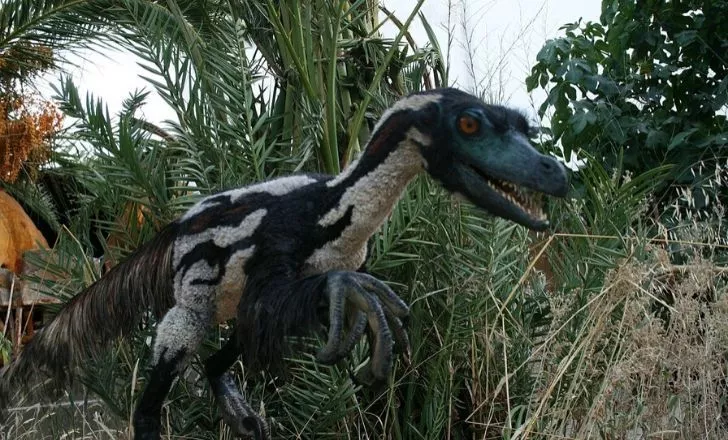
There are some theories among paleontologists that Velociraptors, or at least their close relatives, climbed trees.
While it’s a pretty contested theory, all we have with dinosaurs are theories.
The theory is based upon the singular large blade-like raised claw that Velociraptors and others within the Dromaeosauridae family have on their hind feet.
Some other paleontologists disagree of course, believing that the claws were instead used to slash at their prey, rather than for climbing.
It’s possible that we may never know, but either way, their claws are quite fearsome!
Velociraptors weren’t much smarter than chickens.
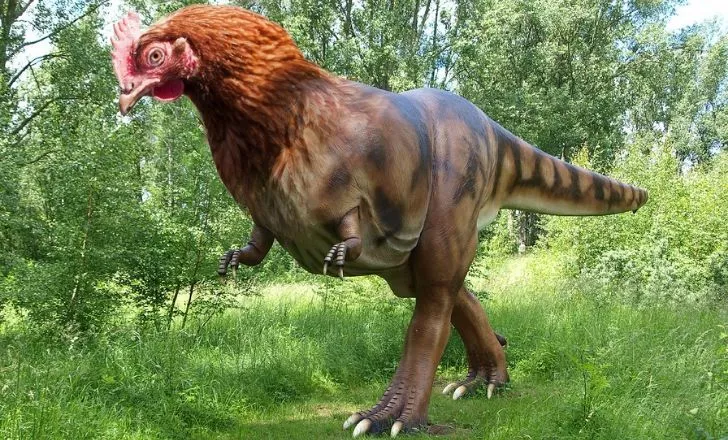
Pop culture has made out these raptors to be hyper-intelligent creatures, capable of complex thought. Unfortunately for Velociraptors, this is simply fantasy.
The reality is that dinosaur brains weren’t all that developed, with their mental processes being up to the same level of a newborn cat if that at all.
If anything, I’ve just insulted chickens more than Velociraptors.
There are actually two different species of Velociraptors.
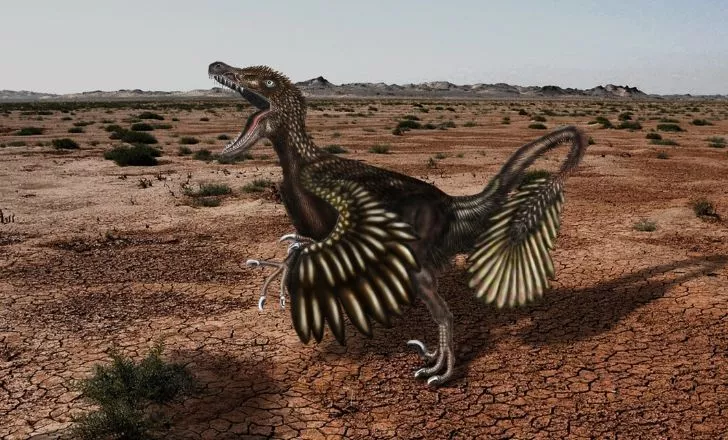
While the first species of Velociraptor, V. mongoliensis, was discovered in 1924, the second was discovered much later in 2008, also in Mongolia.
This second species was named Velociraptor osmolskae after the Polish paleontologist Halszka Osmólska.
The known differences between the two are minimal, though. As far as paleontologists can tell, the only differences lie in minor variations in their jaws.
We have no idea what they sounded like.

For those who were left shivering in their seats when they watched any of the Jurassic Park movies, worry no more!
The reality is that we have no way of reconstructing the sounds that they would have made using fossils alone.
So, what were those sounds that scared us all? A sound designer recorded a number of sounds of different animals at an animal park.
Some of the sound samples were from horses, geese, dolphins, and even the grunts of tortoises making love!
In reality, Velociraptors were more like land-based eagles.
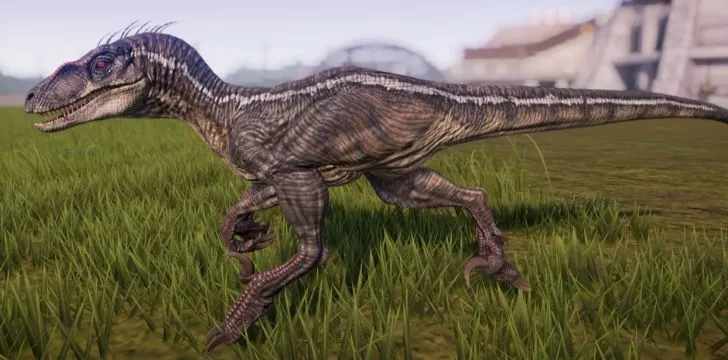
As we’ve previously gone over, we now know that Velociraptors were feathered beasts, rather than the previously held idea that they were covered in scales like lizards.
Some scientists have put forward the idea that the modern animals that Velociraptors were most similar to are eagles.
One main reason for this is due to the large claw on the Velociraptor’s hind legs, which seems very similar to an eagle’s talon.
It’s supposed that they even used the claw in a similar way to eagles by hooking into their prey and holding on while biting them with their rather formidable teeth.
No matter what, whether they were like land-based eagles or not, I certainly wouldn’t want to meet an angry one!
Velociraptors were agile and skilled hunters.
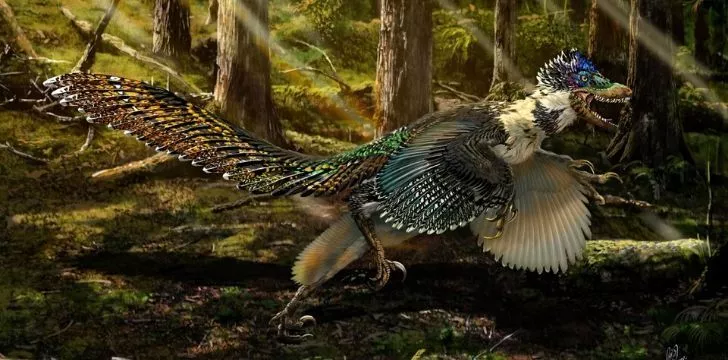
The famous fossil of a Velociraptor and a Protoceratops caught in the middle of a fight has led paleontologists to believe for a long time that this dinosaur was the type that Velociraptors hunted.
While it’s an interesting idea, it’s been figured that this probably isn’t the case.
Velociraptors were quite small beasts, with razor-sharp teeth and physical builds that indicated great agility.
This meant that they would have been very skilled hunters, but due to the narrowness of their jaws, they most likely hunted animals much smaller than themselves.
Velociraptors could run much faster than humans.
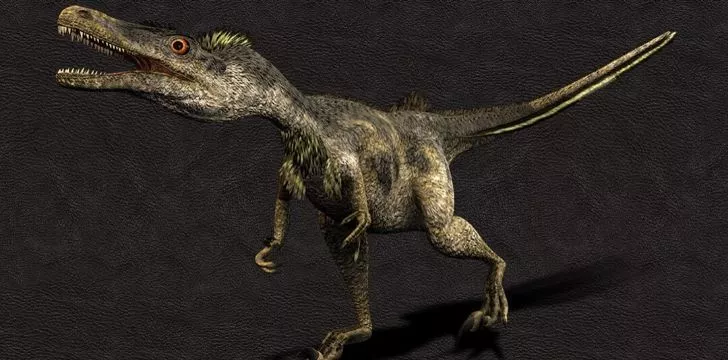
Something that Jurassic Park did get right is the terrifying speed of Velociraptors.
Scientists are able to model the approximate speed of animals based on their general physical build, and the length of their shinbones.
In the case of Velociraptors, they had quite long shinbones, as well as a long sturdy tail which could have helped them to steer while at high speeds.
So how fast could they run? The rough estimates are a terrifying 40 miles per hour (64 km/hr)!
Well, there we have it. What we know about Velociraptors isn’t all that different from what we originally guessed when they were discovered.
They were very swift, and they probably stole eggs and young from other dinosaurs’ nests.
The biggest surprise to most people is that they had feathers, but I think I’m okay with that!
How about you? Personally, the idea of land-based eagles that could run at 40 miles per hour is terrifying enough to me!

